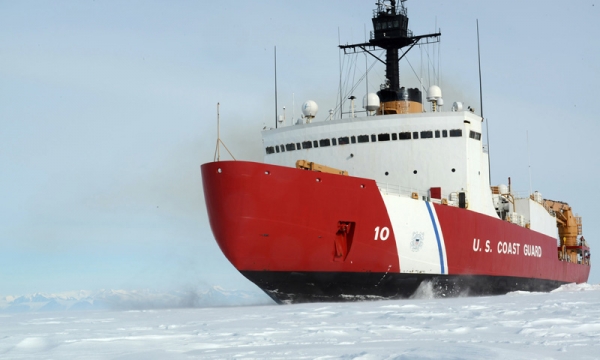The Bering Sea is the most productive ground fishery in the world, particularly for salmon, halibut and shellfish. About half of U.S. fish and shellfish come from that area and the fishing industry is the main driver of jobs in and around the Aleutian Islands. The freezing and melting of sea ice in the area heavily impacts the primary productivity, which is the bottom of the marine food chain.
Research Associate Professor Jaclyn Kinney, Research Professor Wieslaw Maslowski, and Research Assistant Professor Younjoo Lee – all in the Naval Postgraduate School (NPS) Department of Oceanography – looked at how sea ice variability in the Bering Sea over the last several decades might impact the cold pool and marine primary production. Their research, sponsored by the U.S. Department of Energy and National Science Foundation, was published in PLOS One in April 2022.
The Arctic region has become increasingly critical to U.S. security interests, and particularly to the U.S. Navy, over the past several years. Dual purpose research in predicting sea ice, and the impact of its fluctuations, is critical for navigation and understanding how systems operate.
Read more at: Naval Postgraduate School
The U.S. Coast Guard (USCG) Cutter Polar Star, pictured carving through ice in this 2017 USCG image, supported the Naval Postgraduate School research team in the field during a detailed study, sponsored by the U.S. Department of Energy and National Science Foundation, into sea ice variability in the Bering Sea and its broader impact to the Arctic region. (Photo Credit: Naval Postgraduate School)


